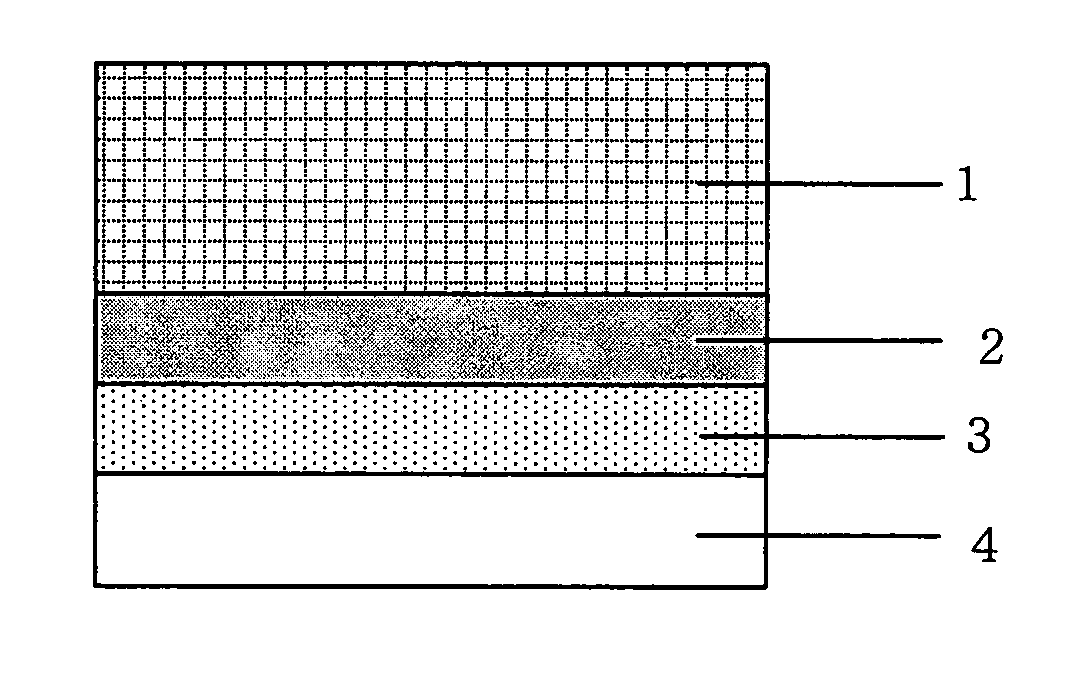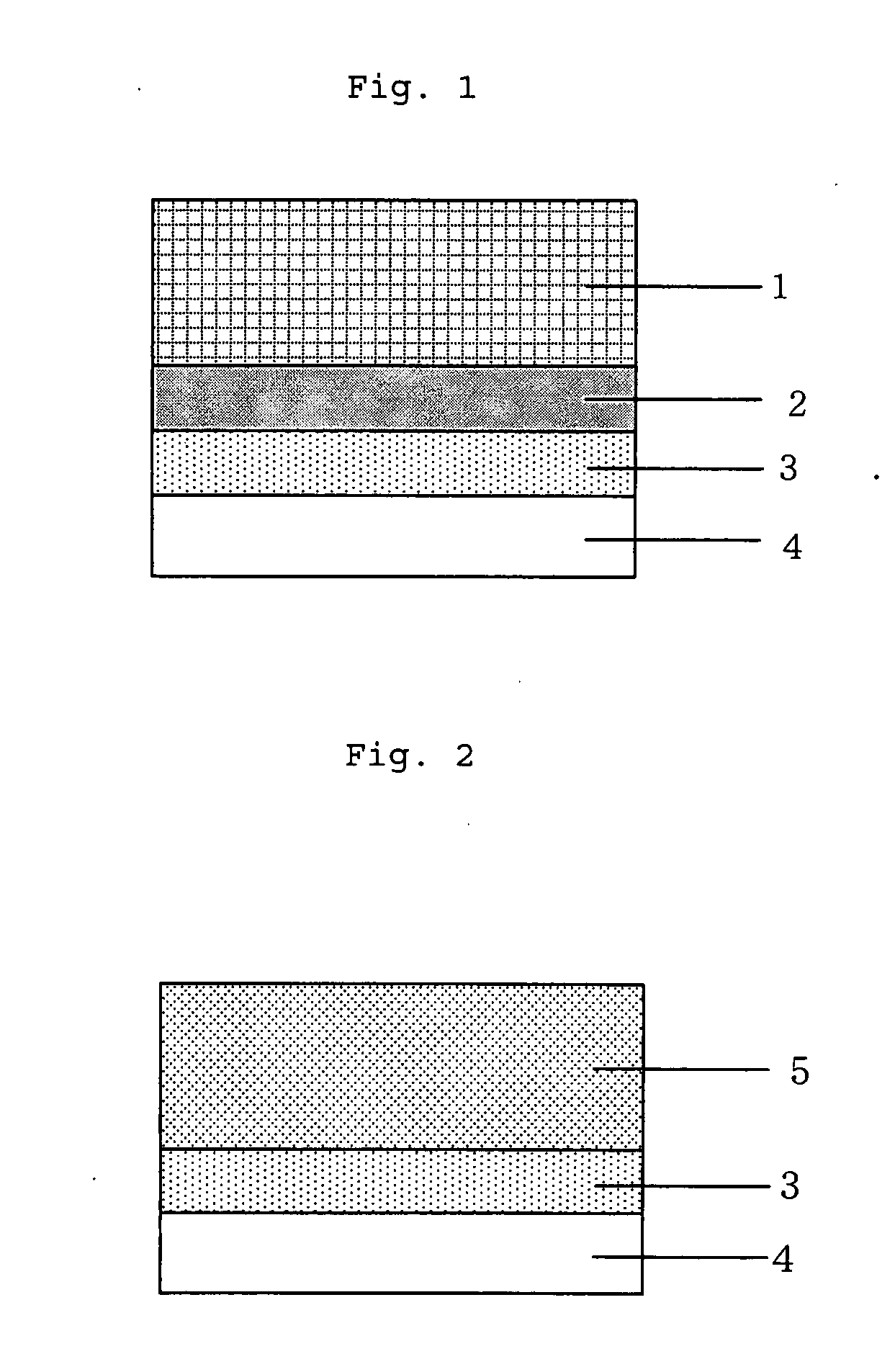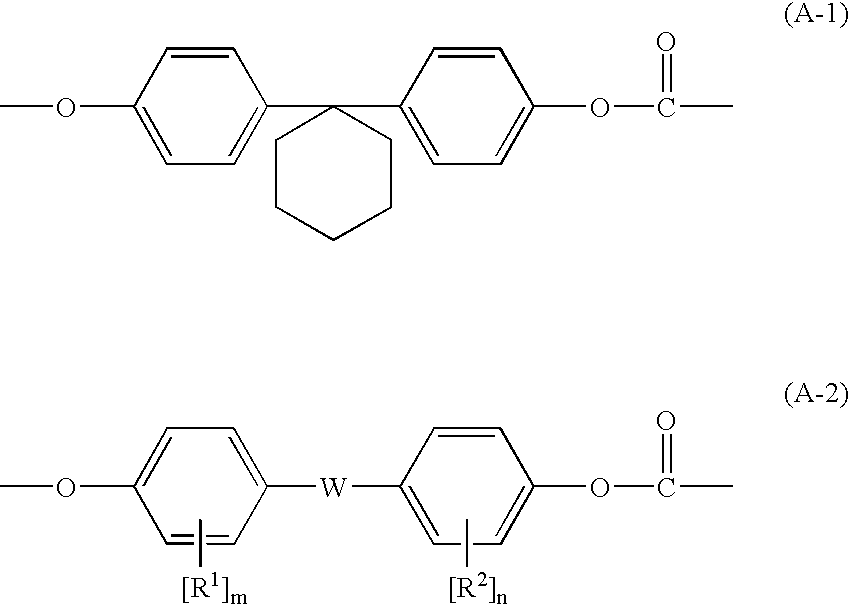Resin composition
a technology of composition and resin, applied in the field of resin composition, can solve the problems of image deletion, insufficient printing durability, and inability to print or copy normal, and achieve the effect of excellent hardness and abrasion resistan
- Summary
- Abstract
- Description
- Claims
- Application Information
AI Technical Summary
Benefits of technology
Problems solved by technology
Method used
Image
Examples
example 1
(Component A)
[0105] A reactor having a thermometer, a stirrer and a reflux condenser was charged with 1,963 parts of ion-exchanged water and 314 parts of a 48.5% sodium hydroxide aqueous solution, and 292 parts of 1,1-bis(4-hydroxyphenyl)cyclohexane (to be sometimes referred to as “BP-Z” hereinafter) and 0.61 part of hydrosulfite were dissolved therein. Then, 1,112 parts of methylene chloride was added, and 135 parts of phosgene was blown in with stirring at 22 to 30° C. over 60 minutes. After completion of the addition of the phosgene by blowing, 44 parts of a 48.5% sodium hydroxide aqueous solution and a solution of 155 parts of p-tert-butylphenol in 5 parts of methylene chloride were added, and the mixture was emulsified. Then, 0.3 part of triethylamine was added, and the mixture was stirred at 28 to 33° C. for 1 hour to complete the reaction. After completion of the reaction, a formed product was diluted with methylene chloride and washed with water, and it was acidified with ...
example 2
[0112] A resin composition, a film and an electrophotographic photoreceptor were obtained in the same manner as in Example 1 except that the weight ratio (A / B) of the components A and B was changed to 60 / 40. Table 1 shows results.
example 3
[0113] A resin composition, a film and an electrophotographic photoreceptor were obtained in the same manner as in Example 1 except that the weight ratio (A / B) of the components A and B was changed to 40 / 60. Table 1 shows results.
PUM
| Property | Measurement | Unit |
|---|---|---|
| mol % | aaaaa | aaaaa |
| mol % | aaaaa | aaaaa |
| mol % | aaaaa | aaaaa |
Abstract
Description
Claims
Application Information
 Login to View More
Login to View More - R&D
- Intellectual Property
- Life Sciences
- Materials
- Tech Scout
- Unparalleled Data Quality
- Higher Quality Content
- 60% Fewer Hallucinations
Browse by: Latest US Patents, China's latest patents, Technical Efficacy Thesaurus, Application Domain, Technology Topic, Popular Technical Reports.
© 2025 PatSnap. All rights reserved.Legal|Privacy policy|Modern Slavery Act Transparency Statement|Sitemap|About US| Contact US: help@patsnap.com



